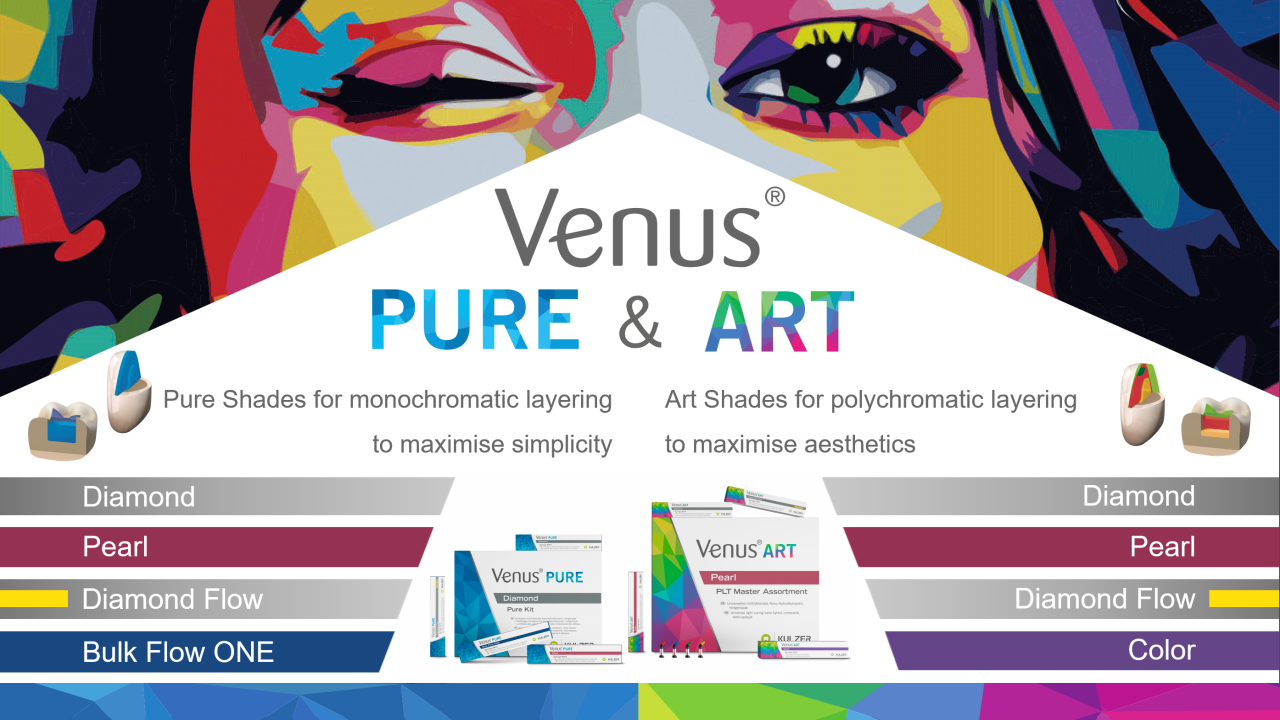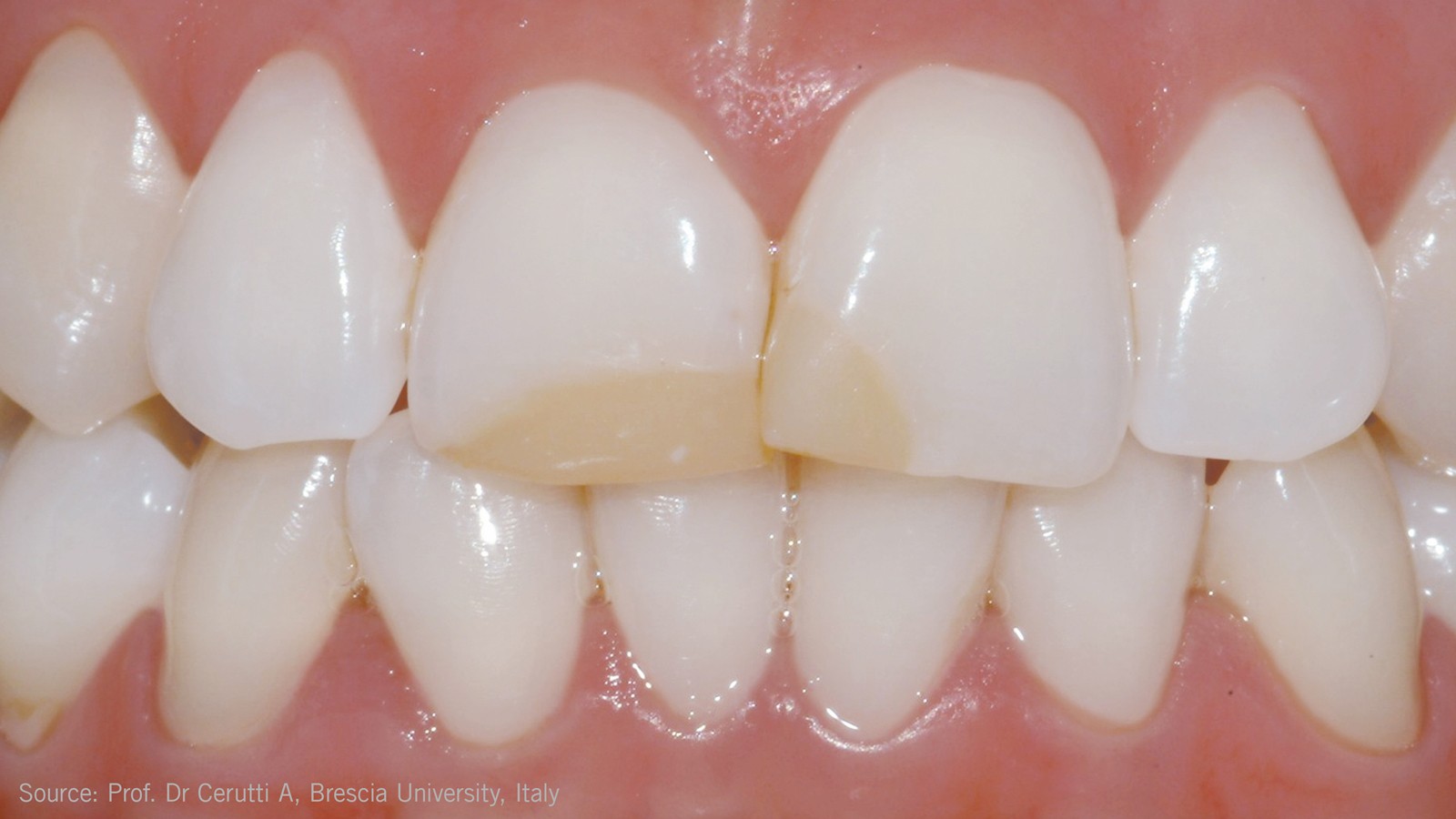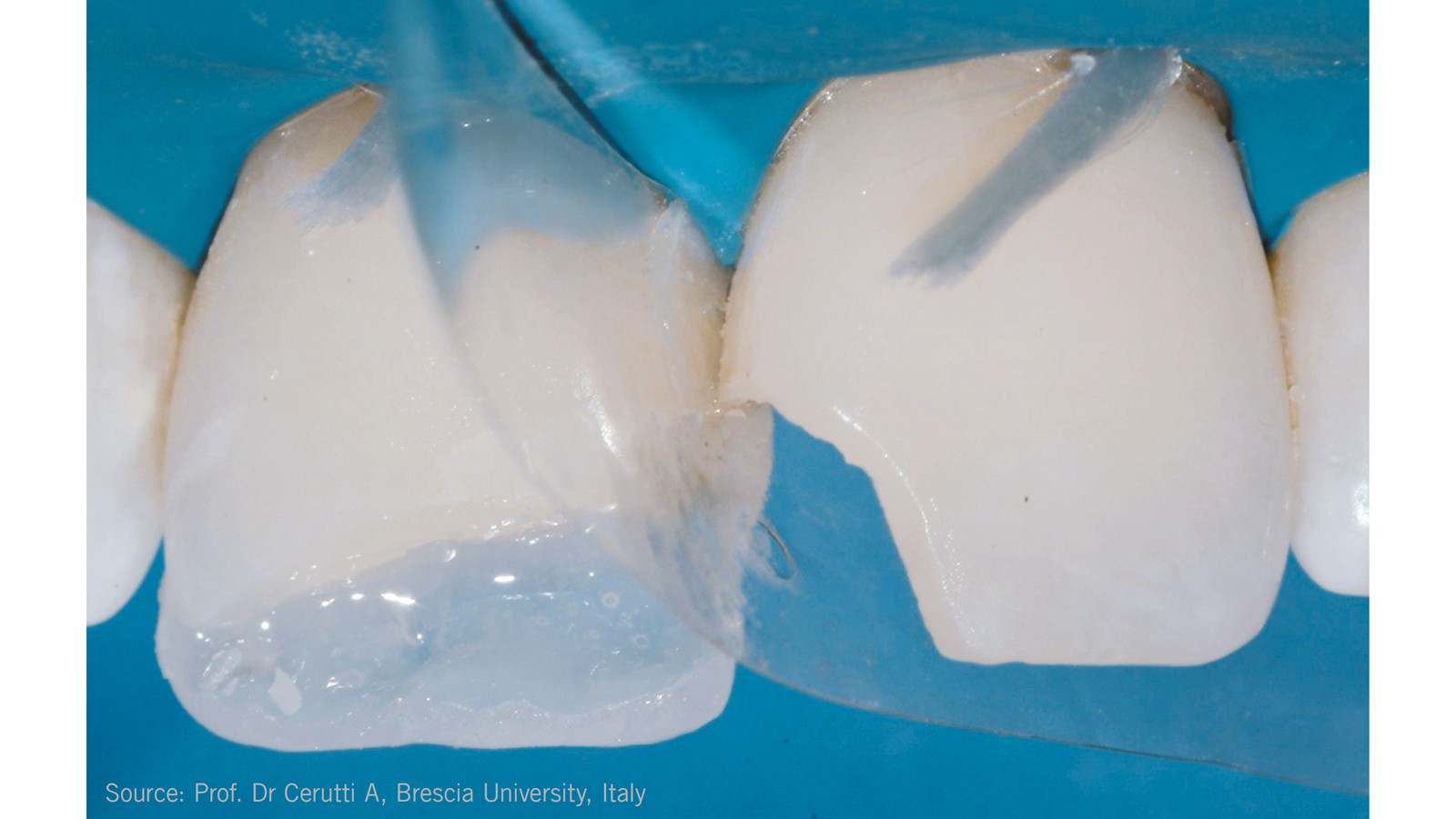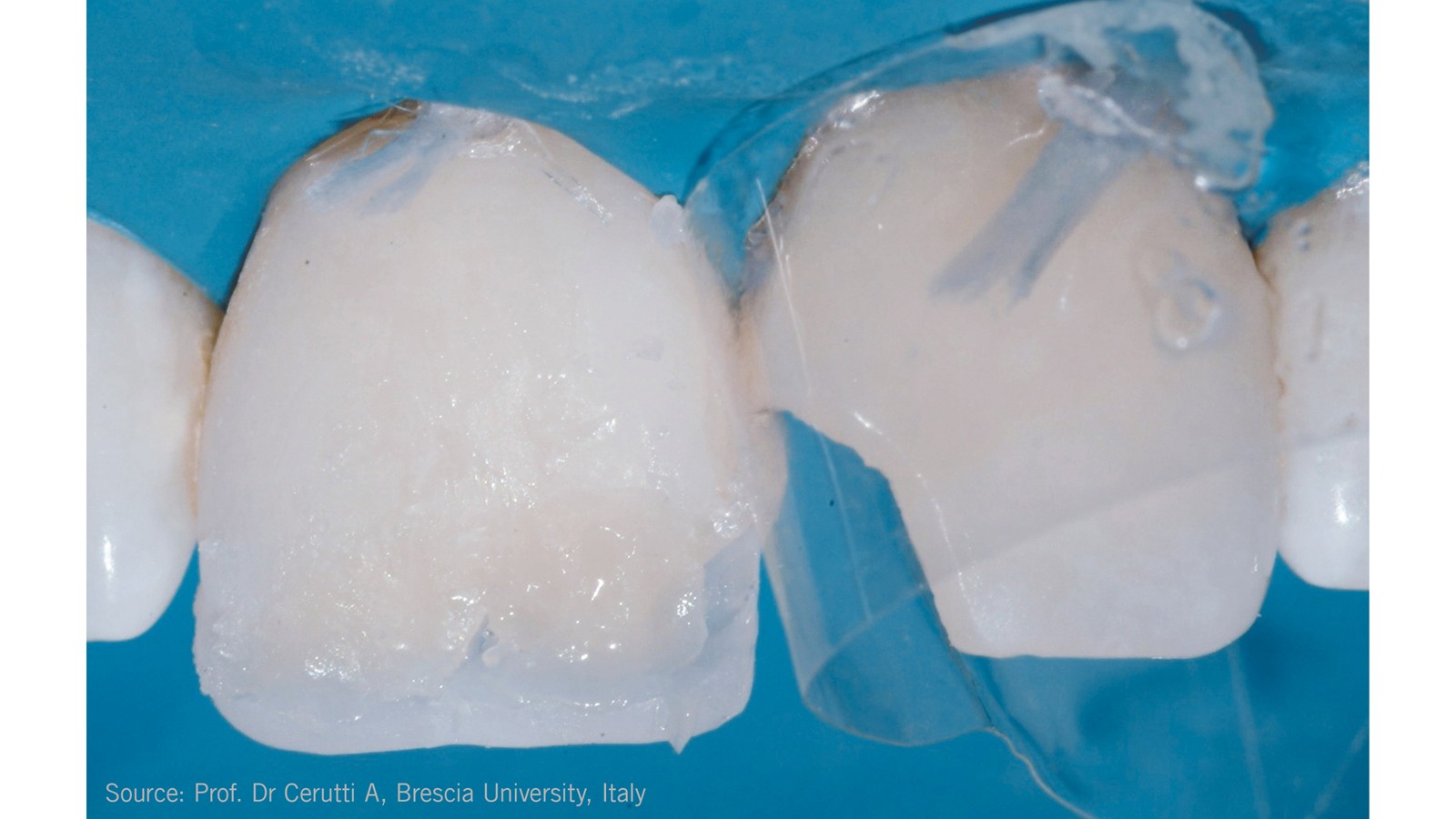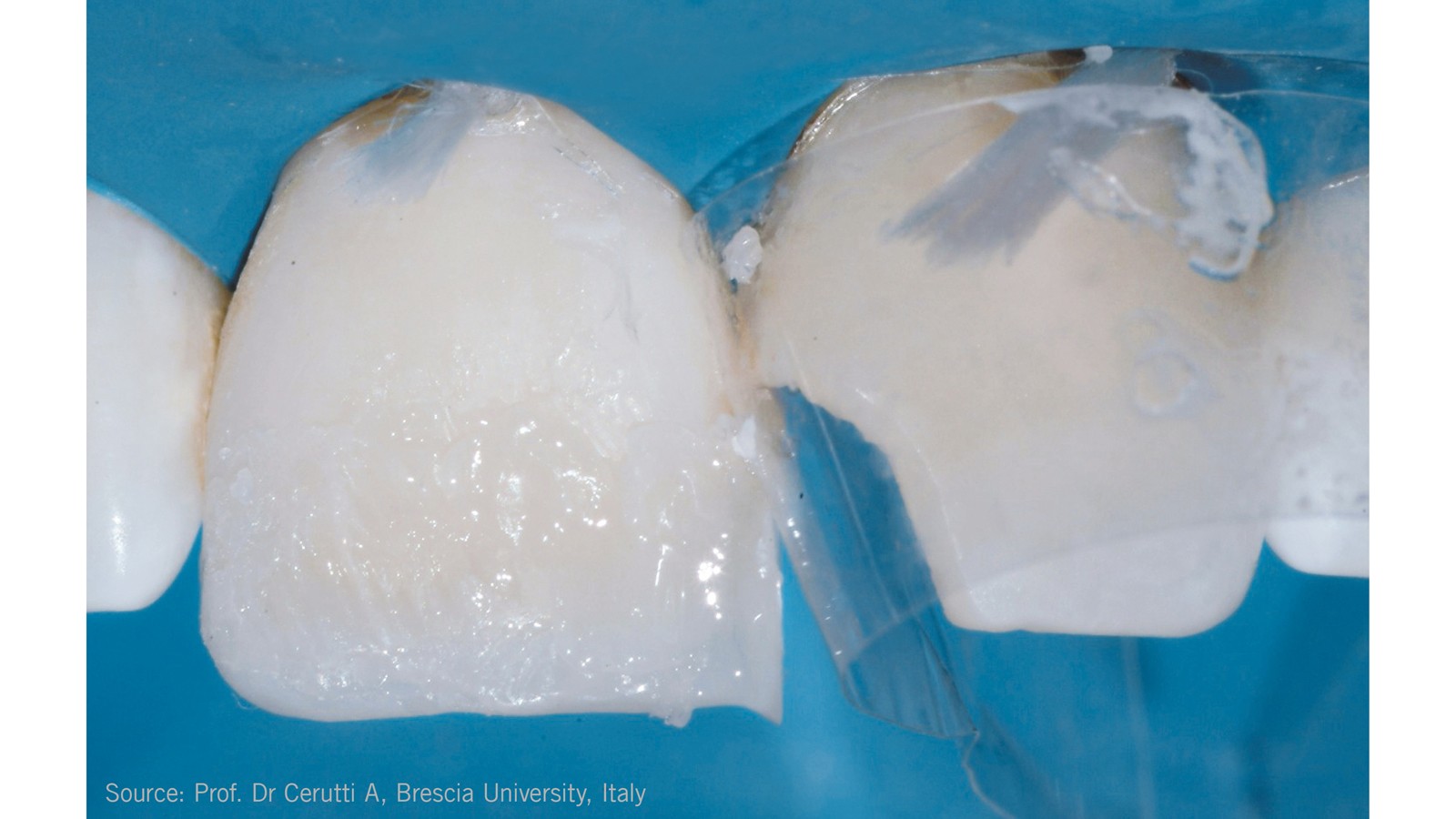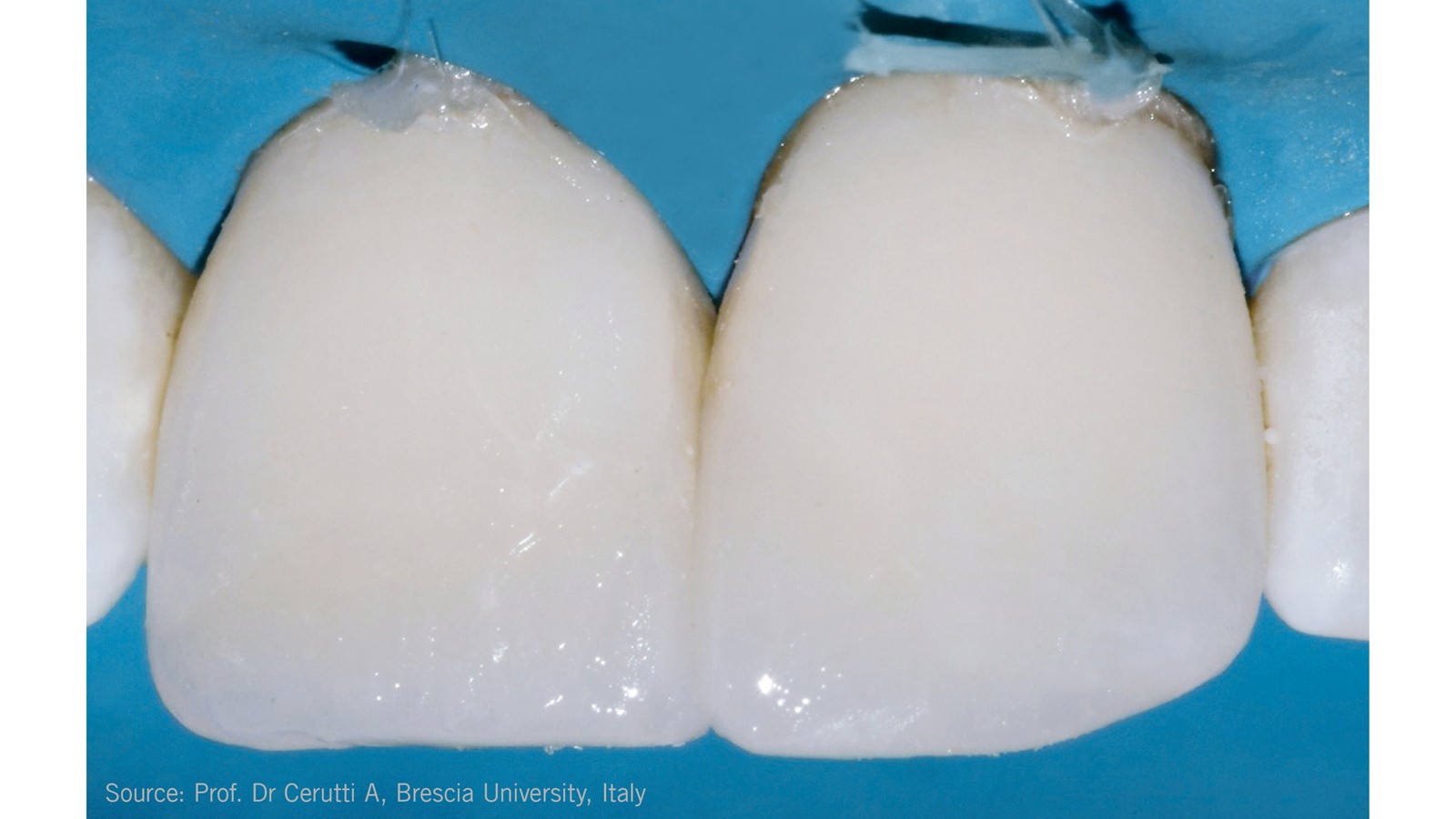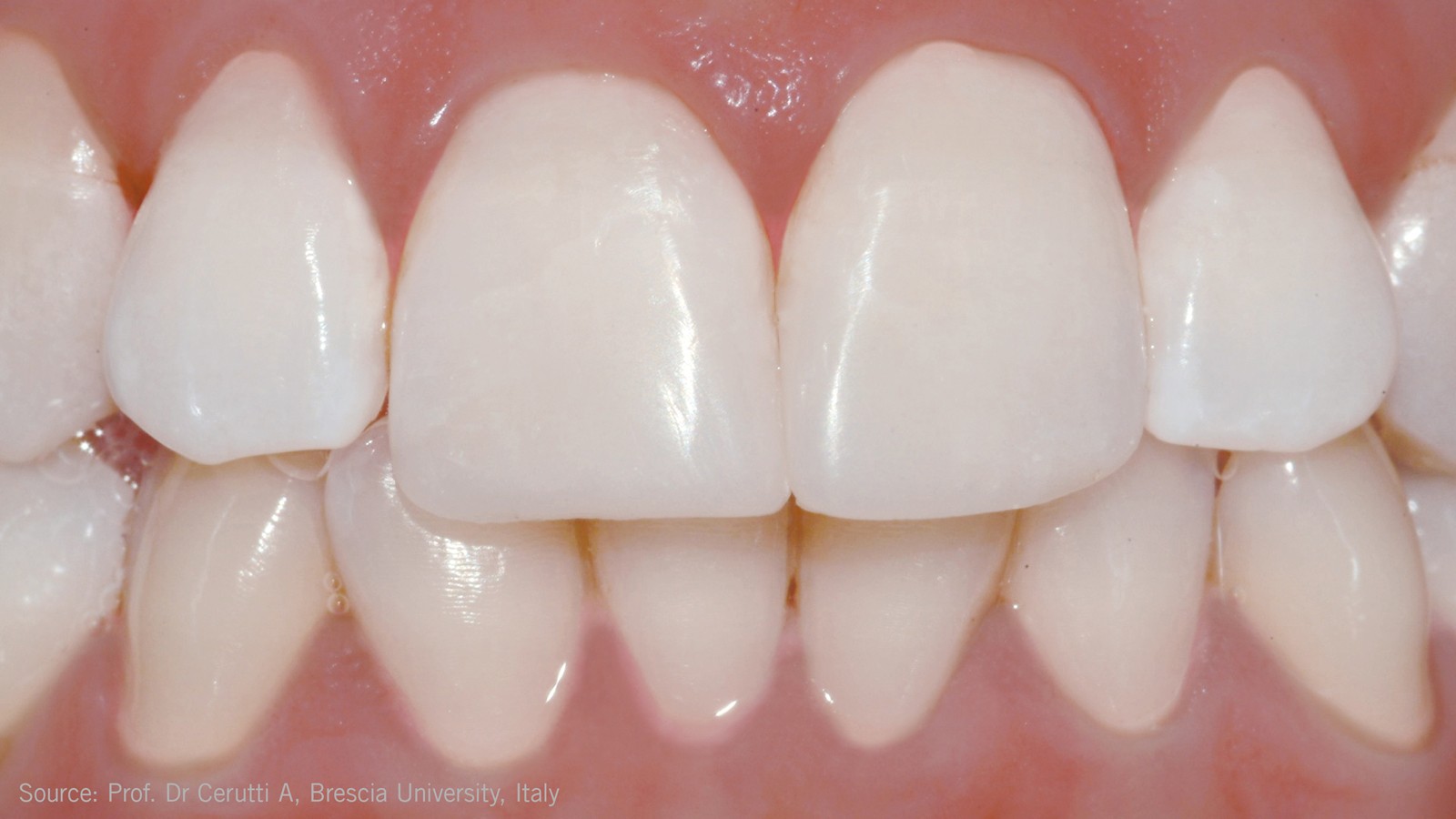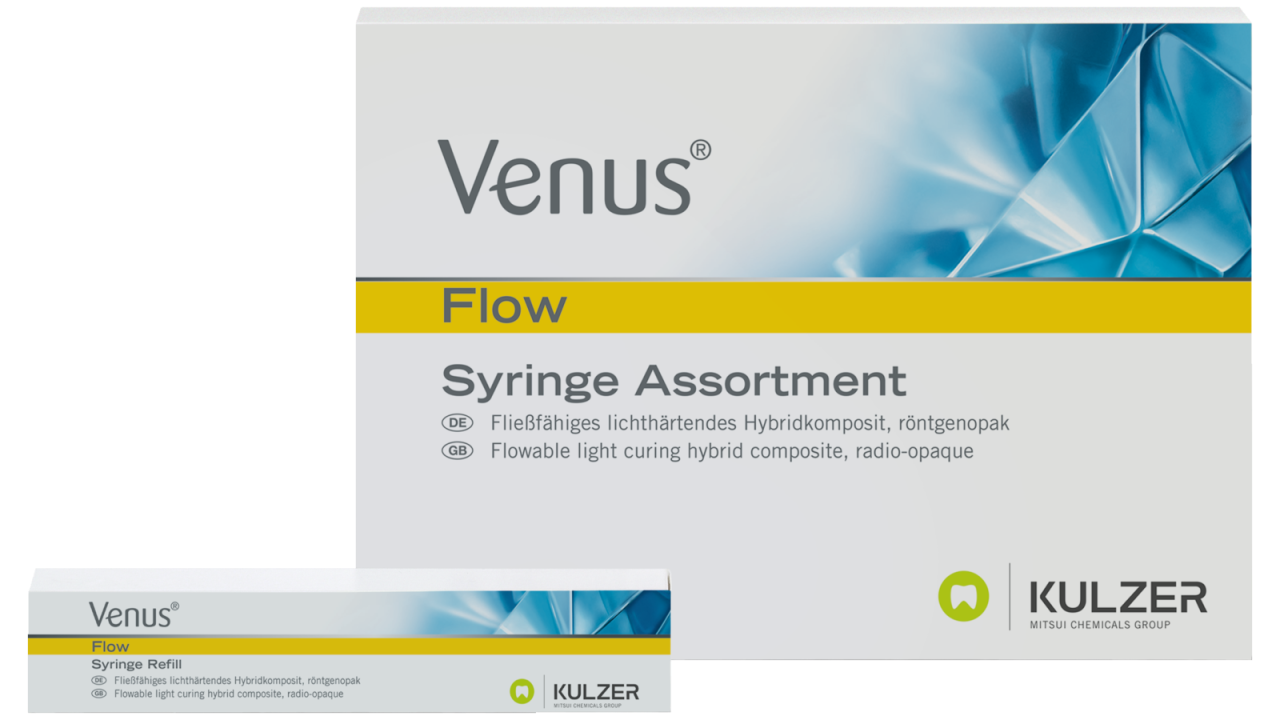Contact Kulzer International
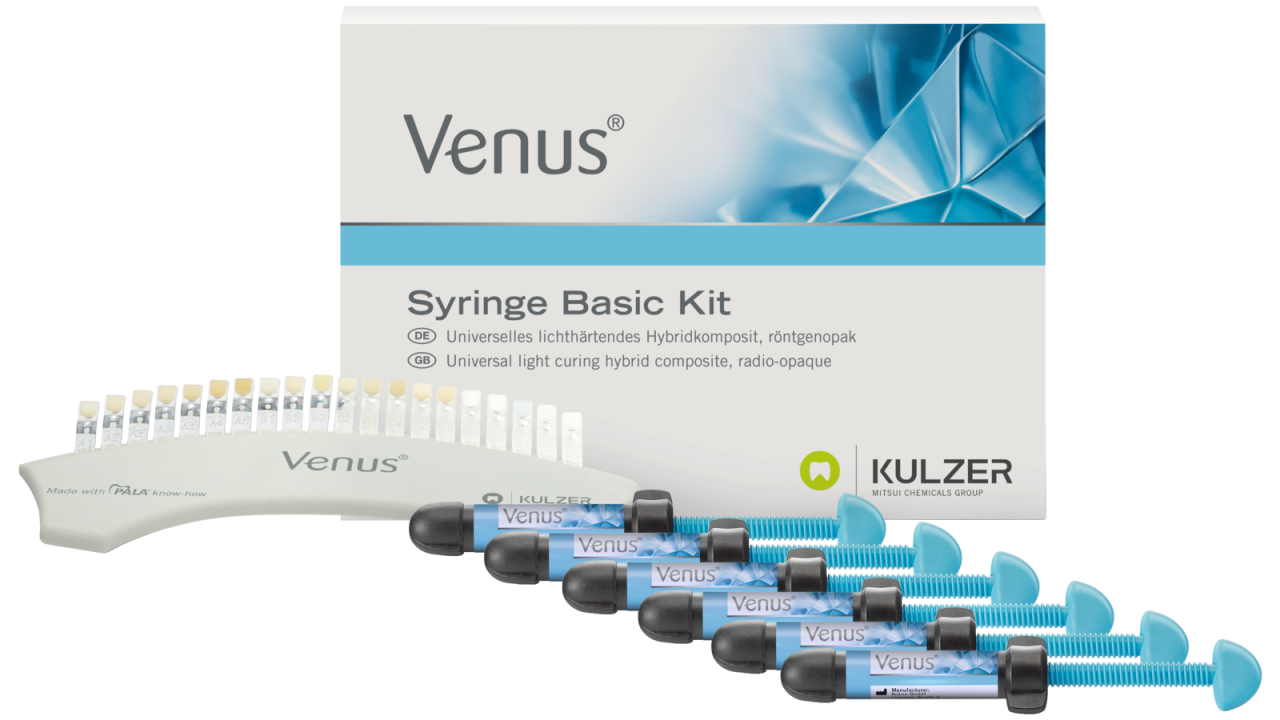
Venus®
Simply beautiful. Simply Venus.
Venus is a light-curing, universal hybrid composite. Its comprehensive range of shades and unique layering concept will ensure that all your restorations are masterpieces. Venus helps you give your patients long-lasting, aesthetically pleasing restorations.
Benefits
- Impressive aesthetics: The result of the complex Venus mechanism is virtually undetectable restorative margins.
- Exceptional application properties: Venus is a stable, medium-viscosity filling material.
- Universally applicable for anterior and posterior fillings.
Good to know
Applications
Restorations with no ifs or buts.
The refractive indices of the fillers and matrices in our Venus products have been perfectly aligned. Our 'Colour Adaptive Matrix' is responsible for this. It gives Venus the unique ability to blend in with the shade of the surrounding hard tooth tissue, creating an outstandingly natural look. The result of this complex mechanism is virtually undetectable restorative margins. The ultrafine filling particles allow you to achieve the perfect polish comparable to natural enamel.
Universal application
Venus – a medium-viscosity filling material with exceptional handling properties. The Venus composite is stable whilst at the same time being smooth to work with. This facilitates contouring and increases efficiency. The excellent polishing and layering properties of Venus make it ideal for anterior restorations. Its extremely good strength and abrasion resistance also make it the material of choice for posterior fillings.
Clinical pictures: Prof. Dr Cerutti A, Brescia University, Italy
Science
The classic universal composite: evidence-based and clinically tested.
Results are available for Venus from clinical studies at the University of Leipzig, Germany, and the University of Loma Linda, USA. Both studies document the excellent clinical viability and durability of Venus restorations. In all categories evaluated in the study at the University of Loma Linda, USA, Venus was ranked Alpha (Code A) or Beta (Code B). 40 of the original 53 fillings that were placed (classes III, IV, V, diastema closure, veneers) were evaluated after two years.
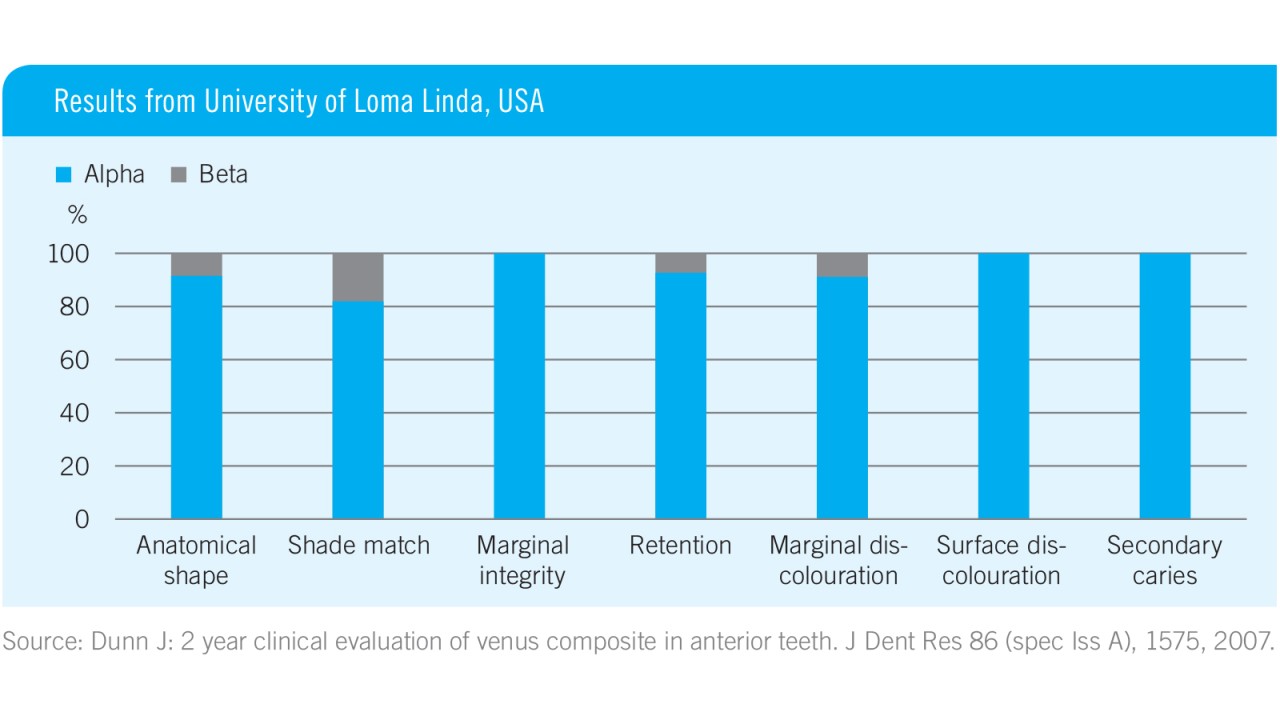
Layering Guide
Where colour and quality merge
By applying Venus in layers, you can take advantage of all its aesthetic benefits. Venus is available in 20 shades and 3 degrees of translucency to ensure exact colour adaptation and masking. A customised build-up of dentine, enamel and incisal shades creates natural restorations that perfectly match the patient’s surrounding tooth structure. Bleach shades have also been specially developed for bleached teeth.
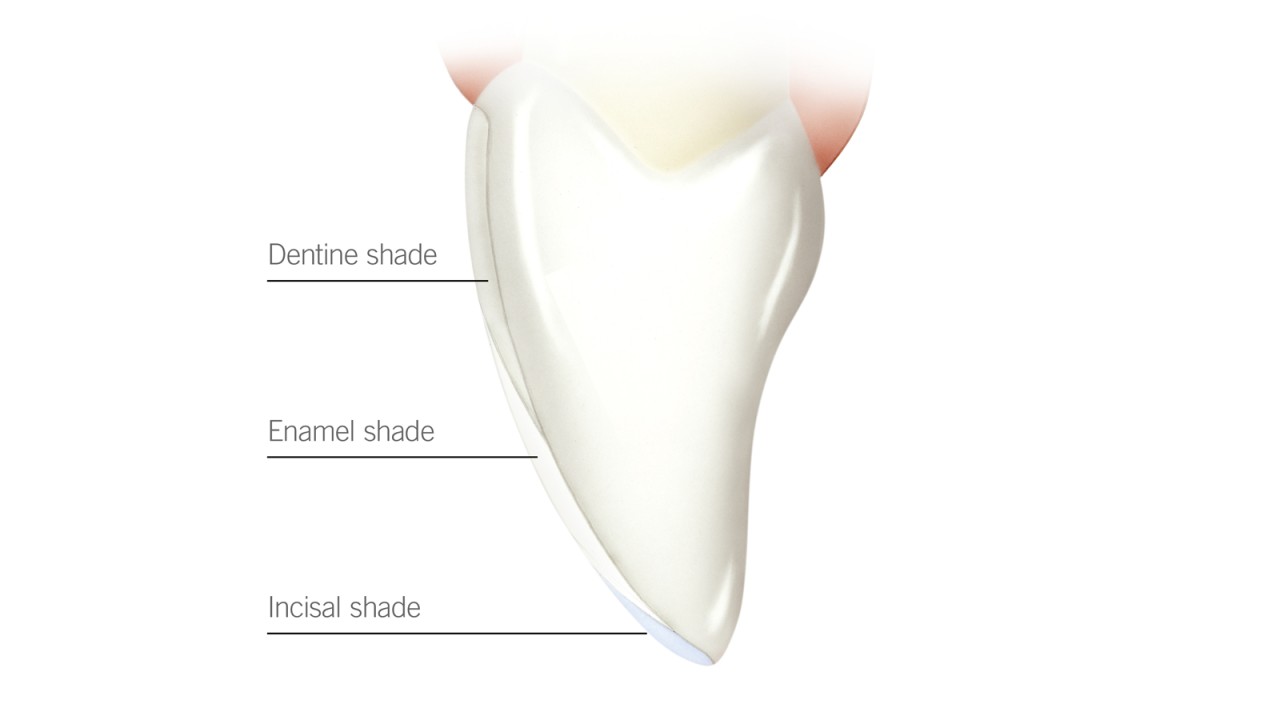
Layer by layer
Opaque dentine shades exhibit the greatest depth of shade (chroma) and are ideal for building up areas of lost enamel structure which require their shade or lightness to be masked. This includes the dentine core when building up point angles in the anterior area.
The enamel shades have medium transparency chroma and are available in a wide range of shades. Enamel shades can be used without additional layering or can be combined with dentine and translucent incisal shades to achieve aesthetically pleasing results.
Incisal shades have the greatest transparency and least chroma. They are used for adding the finishing touches to the restoration. They are built up over the enamel shades or in the incisal margin to create a natural appearance.
The genuine, two-layer shade guide
Venus comes with a two-layer shade guide to help you select the appropriate colour. The guide is hand-made with original materials and consists of a base layer of dentine, the surface of which is coated with enamel. This structure reflects that of a natural tooth, whilst the ultimate colour of the restoration is displayed. Choosing the exact shade has never been easier.
FAQ
1. Why is the option to be able to apply composite fillings in 2 layers an advantage?
Composite fillings that are built up using many opacity levels demonstrate an aesthetic advantage. Particularly in the anterior area, it is frequently necessary to fabricate the cavities using opaque dentine and translucent enamel shades: dentine and enamel layer.
2. Should Venus fillings always be applied with many opacity levels?
No. If high aesthetic needs are secondary, e.g. in the molar region, monochromatic layering techniques are sufficient and only the enamel shades are applied.
3. What does Colour Adaptive Matrix mean?
This means the property of Venus shades that allows it to match the shade of the natural tooth. The refractory indices of the filler and the monomer system are optimised in Venus so that Venus fillings take on the shade tones of the surrounding tooth substance. If the shades are selected correctly, the tooth and filling blend with one another and the filling margins become invisible.
4. What are the benefits of the Venus composite property described as “sculptability”?
After Venus is applied, the material remains unchanged in its shape and position, it does not spread under its own weight. When pressure is applied, however, it readily assumes the desired contours. For this reason, it is equally well suited to fillings in the anterior region as the posterior region.
5. What is special about the Venus Shade Guide?
The Venus Shade Guide consists of the Venus original material and not of acrylic. This guarantees shade fidelity between the shade selection and the filling. The opaque and enamel shades were used for layering the sample; this facilitates determination of shade in the patient.
6. What can be said about the clinical performance of Venus?
Venus has been available since 2002. Long term results from clinical studies on Venus at the University of Loma Linda, USA, for example, prove the excellent clinical viability and durability of Venus restorations.
7. What are the essential differences between Venus and Charisma?
Venus is more stable than Charisma and accordingly can be better modelled. The Venus product line has more shades and special shades and more shade tones, which are easier to combine in virtue of their corresponding nomenclature. The Venus Shade Guide has a double-layer construction and also provides the shade combination of dentine and enamel shades, which makes it possible to obtain exact correspondence between shade selection and restoration.
8. Why were the Kulzer shades HKA2.5 and HKA5 created?
The HKA2.5 shade closes the gap between the most popular Vita shades, A2 and A3. There was a corresponding market demand for an intermediate shade. HKA5 is intended especially for use in treating cervical lesions in older patients. Previously, there was no corresponding reddish brown darker shade for this indication.
9. Is it appropriate to have a composite system with such a comprehensive shade range?
A comprehensive system like Venus is required for fabricating highly aesthetic fillings. In this scenario, the complete Venus system is compact and provides a maximum of options.
10. Are there differences in the polymerisation times required for the standard and opaque shades?
Yes, all opaque and even some enamel shades (A4, B3, C3, C4, D3, HKA5) must be cured for 40 seconds. Because of their high shade density they absorb more light than the enamel shades. 20 seconds is adequate for setting of all other standard Vita shades.
11. Is Venus compatible with other composites and bonding agents?
Venus can be combined with all commercially available (meth)acrylate-based composites and bondings.
12. What does “PLT” stand for?
"PLT" is the abbreviation of "preloaded tips“.


